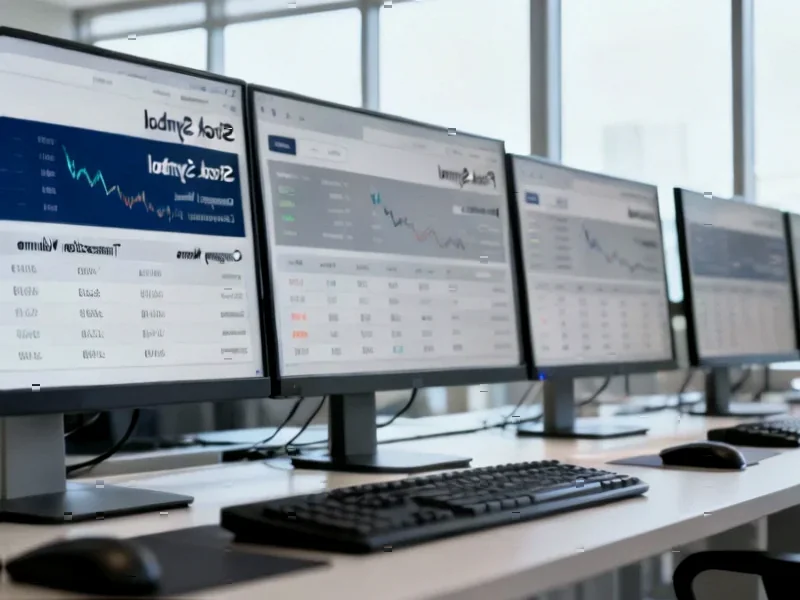According to Forbes, Caterpillar stock has surged 10% over the past week to reach $577.26 per share, creating a market capitalization of approximately $271 billion for the industrial equipment manufacturer. Their analysis indicates a negative outlook with a potential price target of $404, citing concerns about weak operational performance, financial health, and high valuation metrics. The assessment highlights Caterpillar’s diverse business spanning construction and mining equipment, engines, industrial turbines, and energy systems across multiple sectors. While infrastructure spending optimism has driven recent gains, Forbes suggests the stock may have run too far, too fast, making this an opportune moment to examine the company’s underlying business strategy.
The Infrastructure Boom Reality Check
Caterpillar’s recent surge reflects market optimism about government infrastructure spending, but this overlooks the complex reality of industrial equipment cycles. While the Bipartisan Infrastructure Law promises significant long-term investment, the timing and flow of these projects creates uncertainty for equipment manufacturers. Infrastructure projects typically have long lead times from funding approval to equipment procurement, meaning Caterpillar may not see immediate revenue benefits from current legislative optimism. More critically, the company faces intense competition from both established players like Komatsu and Deere, plus emerging Chinese manufacturers that are increasingly competitive in global markets.
Valuation Versus Business Fundamentals
The disconnect between Caterpillar’s current valuation and its underlying business model reveals deeper strategic challenges. As a cyclical industrial company, Caterpillar’s fortunes are tied to global construction, mining, and energy markets that remain volatile. The company’s quarterly results show inconsistent performance despite recent stock gains, suggesting investors may be pricing in perfect execution across all business segments simultaneously. More concerning is Caterpillar’s exposure to China’s property market slowdown and potential mining sector headwinds if commodity prices soften. The current valuation appears to assume sustained peak-cycle performance that historically proves difficult to maintain in the capital equipment industry.
Strategic Transformation Challenges
Caterpillar faces significant strategic headwinds beyond simple valuation metrics. The company’s traditional diesel-powered equipment business faces existential threats from the global transition toward electrification and sustainability. While Caterpillar has announced electric mining truck prototypes, the capital investment required to transition its entire product line represents a massive financial burden that could pressure margins for years. Additionally, the company’s services and solutions business, while growing, hasn’t yet reached the scale needed to offset potential declines in equipment sales during economic downturns. This creates a fundamental business model challenge as Caterpillar balances legacy operations with necessary innovation investments.
Competitive Landscape Shifts
The industrial equipment sector is undergoing profound changes that threaten Caterpillar’s market position. Beyond traditional competitors, the company faces disruption from technology companies entering construction automation and equipment-as-a-service models. Companies like Built Robotics and equipment rental platforms are changing how construction companies access and utilize machinery, potentially reducing long-term demand for outright equipment purchases. Meanwhile, regional competitors in emerging markets continue to gain share with lower-cost alternatives that meet basic equipment needs without Caterpillar’s premium pricing. These structural shifts suggest the company may face permanent margin compression even if revenue holds steady.
Investment Strategy Implications
For long-term investors, the critical question isn’t whether Caterpillar is overvalued today, but whether its business model can sustain growth through the coming industry transformation. The company’s financial health remains strong with solid cash flow generation, providing resources to navigate industry changes. However, successful navigation requires strategic clarity about which business segments to prioritize and which legacy operations might need restructuring. Investors should monitor Caterpillar’s capital allocation decisions, particularly its balance between dividend payments, share buybacks, and essential investments in electric and autonomous equipment technologies that will determine its relevance in the next industrial era.




